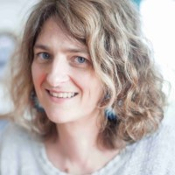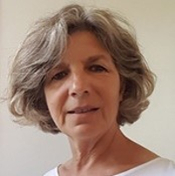|

|
Mélanie Pruvost est chargée de recherche au CNRS et membre de l'UMR 5199 PACEA. Paléogénéticienne, elle est spécialisée dans l’étude des populations humaines et animales. Coordinatrice du projet ANR Ancestra (2015-2020), elle s’intéresse particulièrement au peuplement de la France actuelle depuis le Mésolithique jusqu’au Haut-Moyen-âge. Elle travaille également en collaboration à l'étude de l’évolution de la diversité génétique de certaines espèces animales sous la pression anthropique, notamment la domestication.
|
Mercredi 20 novembre 2024, Conférence grand public (en français, ouverte à tous)
amphi Gintrac, Campus Victoire, Université de Bordeaux :
"Génomes anciens, enfances perdues : Retracer la vie des jeunes dans les sociétés du passé"
La paléogénomique, discipline qui étudie les génomes anciens, a révolutionné notre compréhension des sociétés du passé. Les avancées récentes dans ce domaine permettent non seulement de retracer les migrations et les contacts entre populations mais aussi de reconstituer des pans entiers de la vie des sociétés préhistoriques et anciennes à travers leurs relations de parenté, leur état de santé.... Mais qu’en est-il des enfants qui ont souvent laissés peu de traces tangibles pour les recherches archéologiques traditionnelles ? Cette conférence propose d'explorer ce que les génomes des plus jeunes membres de ces communautés révèlent sur leurs statuts, leurs rôles sociaux, et les pratiques dont ils faisaient l’objet. À travers des exemples concrets, nous découvrirons comment l’ADN ancien éclaire d’un jour nouveau la place des enfants à travers le temps, du Paléolithique à l’Antiquité.
|

|
Alex Ireland est maître de conférences en physiologie musculo-squelettique à la Manchester Metropolitan University. Ses recherches portent principalement sur l'adaptation des os à la charge mécanique tout au long de la vie, avec un intérêt plus large pour la croissance musculo-squelettique et le vieillissement. Il bénéficie actuellement d'une bourse de l'Orthopaedic Research UK et utilise le machine learning pour mettre au point un système d'échographie 3D qui facilite l’étude de la forme des os et des articulations chez les jeunes enfants.
|
Jeudi 21 novembre 2024, Conférence invitée (ouverte aux participants du colloque uniquement)
Odéon, Archéopole, Université Bordeaux Montaigne :
"How muscles shape the growing skeleton"
Due to the short levers muscles work with, the skeleton experiences large muscle forces equivalent to several times bodyweight during physical activity. Bones readily adapt their size, shape, and structure in response to this loading. For example, adolescent tennis players have 40% more bone in their racquet than non-racquet arm, whilst children born breech (and therefore less able to load the skeleton through kicking) have 10° higher femoral anteversion. Prenatal movements, and those associated with acquisition of motor milestones in infancy, appear to have large, persistings effect on skeletal development. In addition, the pattern of bone adaptation to loading seems highly sex and maturity specific, and for some parameters is maintained decades after cessation of activity. Therefore physical activity at different stages of childhood may leave distinct evidence in skeletal remains, even in those individuals who reached adulthood.
In this talk, I will present findings from study of living models of human loading and skeletal health across the lifespan by our group and other colleagues in the field. We will discuss how new techniques and findings in contemporary living populations can confirm and validate archaeological research into children’s lives, and in turn how archaeological study can inform modern science and medicine.
|

|
Joëlle Provasi est maître de conférences Hors Classe à l’École Pratique des Hautes Études et membre du laboratoire RNSR 200515259U CHArt. Psychologue et neuroscientifique, elle s’intéresse aux synchronisations rythmiques du très jeune enfant en interaction avec son environnement. Elle a participé à quatre programmes ANR, Premalocom 1 et 2, Neolocom et Memotime portant sur le développement psychomoteur et la mémoire des enfants. Elle est co-inventeur d'un brevet (n° 3637807: Device for assisting the crawling of an infant), le crawliskate commercialisé par VIPAMAT. Elle participe à un programme de recherche portant sur l’entrainement moteur chez des enfants prématurés à haut risque.
|
Vendredi 22 novembre 2024, Conférence invitée (ouverte aux participants du colloque uniquement)
Odéon, Archéopole, Université Bordeaux Montaigne :
"The influence of the maternal environment on fetal learning"
The intra-uterine environment offers the fetus a multitude of vestibular, tactile, somato-sensory, auditory, vocal, musical, rhythmic and even multi-modal stimuli. All these stimuli can vary according to the mother's activities. In the same environment, the fetus is able to perceive this wide range of stimuli, process the information, store it in its memory and discriminate between it and a new stimulus. It is also able to produce numerous motor actions, both rhythmic and non-rhythmic. The foundations of learning and memory are laid in intra-uterine life. We will also look at the role of sensory-motor synchronization in interaction and communication.





